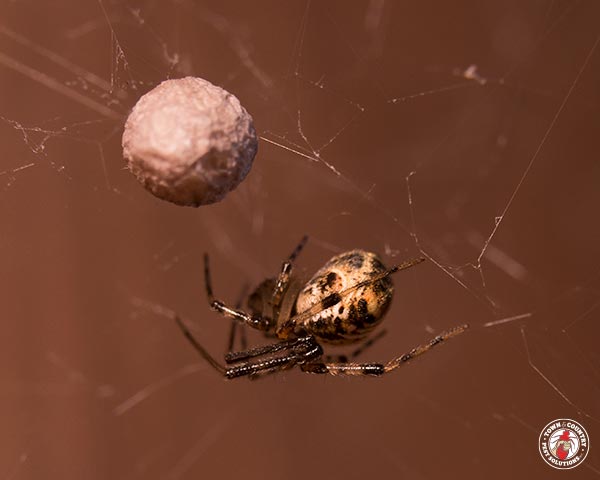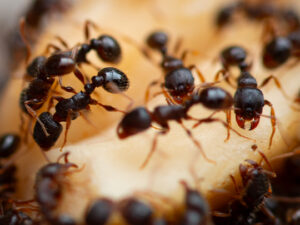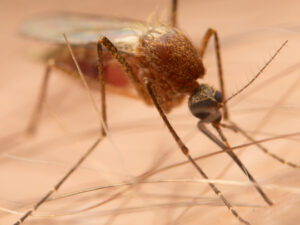
It is not unusual for residents of upstate New York to find multiple spider species lurking around within residential gardens. Some of the most commonly sighted web-building spiders found in gardens in the state include nocturnal orb-weavers, sheet-web weavers, funnel web spiders and black and yellow garden spiders. While these spiders are sometimes found indoors, they prefer to dwell in gardens where insect prey is abundant. The most commonly sighted indoor spiders in upstate New York include cellar spiders and the American house spider. While all spiders produce silk, not all spiders build webs, and most spider species do not build large and picturesque webs. For example, fishing web spiders use their silk to build a protective shelter for their offspring within gardens, and grass spiders use their silk to build a non-sticky funnel web that extends from the ground to the tops of plants in order to trap prey. The most impressive webs found in residential gardens in upstate New York are built by the relatively large-bodied black and yellow spider species of the Argiope genus. In addition to their architecturally impressive webs, the spiders themselves have a conspicuously colorful exterior, and they are among the largest spider species in New York, as females typically measure 3 inches in length with legs extended. However, handling these spiders may not be wise, as they can inflict a painful bite.
Black and yellow spider species are all orb-weavers, and some species build permanent webs where they store food for long periods, while others build new webs daily. Despite their outdoor habitat, bites from these spiders are well documented in medical literature. Most bites are inflicted on humans while they sleep or during outdoor activities. These bites transmit venom that contains a neurotoxin known as argiotoxins that block postsynaptic glutamate receptors in the brain, but most bites very rarely cause systemic symptoms. However, black and yellow spider bites are known for causing pain and redness at the site of the wound, but tissue necrosis does not usually occur. In rare cases, bites can result in secondary infections that are easily treatable with common antibiotics.
Have you ever sustained a spider bite while gardening?













